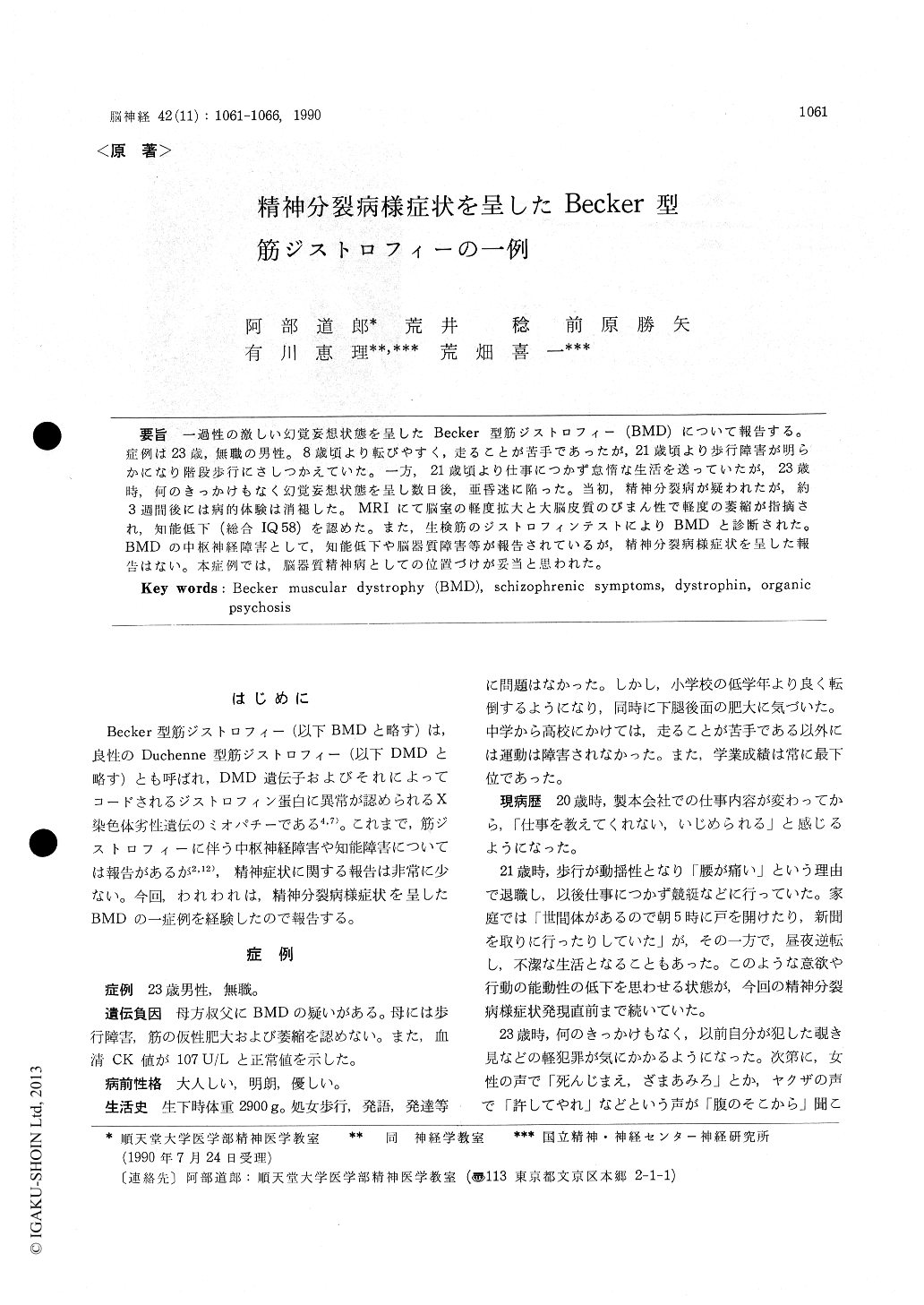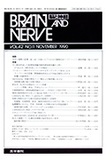Japanese
English
- 有料閲覧
- Abstract 文献概要
- 1ページ目 Look Inside
一過性の激しい幻覚妄想状態を呈したBecker型筋ジストロフィー(BMD)について報告する。症例は23歳,無職の男性。8歳頃より転びやすく,走ることが苦手であったが,21歳頃より歩行障害が明らかになり階段歩行にさしつかえていた。一方,21歳頃より仕事につかず怠惰な生活を送っていたが,23歳時,何のきっかけもなく幻覚妄想状態を呈し数日後,亜昏迷に陥った。当初,精神分裂病が疑われたが,約3週間後には病的体験は消褪した。MRIにて脳室の軽度拡大と大脳皮質のびまん性で軽度の萎縮が指摘され,知能低下(総合IQ 58)を認めた。また,生検筋のジストロフィンテストによりBMDと診断された。BMDの中枢神経障害として,知能低下や脳器質障害等が報告されているが,精神分裂病様症状を呈した報告はない。本症例では,脳器質精神病としての位置づけが妥当と思われた。
A 23-year-old male patient with Becker muscular dystrophy (BMD) who showed schizophrenic symp-toms was reported. He tumbled easily and was poor at running since age at 8 years. He had difficulty in climbing stairs and was idle away all day long since age at 21 years. Although his premorbid personality was not schizoid, he showed auditory hallucinations and delusions without any psychogenetic moment at the age of 23. At first, he seemed to be schizophrenic, but after the treatment with antipsychotics, he always had an insigt into his disease and exhibited natural emo-tional communication. He showed no autism and character changes. According to the Wechsler Adult Intelligence Scale (WAIS), intellectual im-pairment was notified (total IQ 58). Neurological examinations revealed weakness and atrophy of muscles in the proximal part of his lower ex-tremities, and pseudohypertrophy of calves. In the serum enzyme, serum creatine kinase (CK) level was elevated (700 U/L). Abnormal Q waves appeared in the leads, II, III, aVF, V5, V6 on the electrocardiogram (ECG), and the finding of the echocardiography suggested dilated cardiomyopa-thy. The electroencephalogram (EEG) revaled the basic rhythm of 9~10 Hz with θ activities of 6~7 Hz which were predominant in frontparietal and central leads. The electromyogram (EMG) revealed a myopathic pattern with low voltage and short duration. A muscle biopsy from right biceps brachii disclosed the abnormal immunofluorescent staining pattern of dystrophin which is consistent with BMD patient, i. e., "patchy," discontinuous and faint immunoreaction at surface membrane of the fiber. Both molecular weight (380 kd : n=400) 400) and amount (30% ; n=100) of dystrophin were reduced. In brain magnetic resonance imaging (MRI), the 3 rd ventricle was dilated and diffuse mild atrophy was detected in the cerebral cortex. In ascertainment of families, no evidence of mus-cular weakness and abnormal CK level were found in his mother who was considered as carrier of the BMD gene.
Although the relationship between BMD, schizo-phrenic symptoms and intellectual impairment remains to be dissolved, we infer that our patientcould be classified as an crganic psychcsis.

Copyright © 1990, Igaku-Shoin Ltd. All rights reserved.


